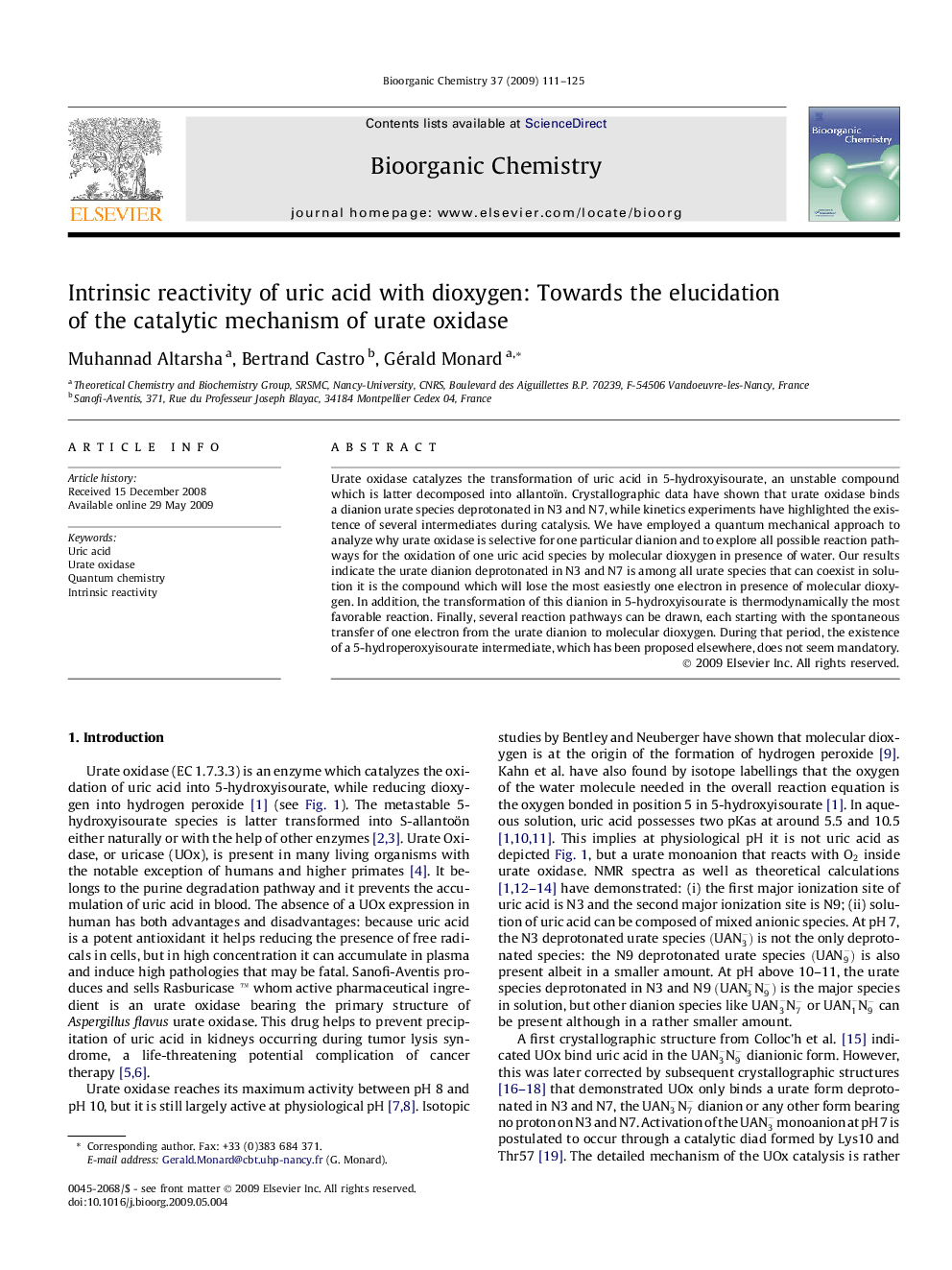| Article ID | Journal | Published Year | Pages | File Type |
|---|---|---|---|---|
| 1356448 | Bioorganic Chemistry | 2009 | 15 Pages |
Urate oxidase catalyzes the transformation of uric acid in 5-hydroxyisourate, an unstable compound which is latter decomposed into allantoïn. Crystallographic data have shown that urate oxidase binds a dianion urate species deprotonated in N3 and N7, while kinetics experiments have highlighted the existence of several intermediates during catalysis. We have employed a quantum mechanical approach to analyze why urate oxidase is selective for one particular dianion and to explore all possible reaction pathways for the oxidation of one uric acid species by molecular dioxygen in presence of water. Our results indicate the urate dianion deprotonated in N3 and N7 is among all urate species that can coexist in solution it is the compound which will lose the most easiestly one electron in presence of molecular dioxygen. In addition, the transformation of this dianion in 5-hydroxyisourate is thermodynamically the most favorable reaction. Finally, several reaction pathways can be drawn, each starting with the spontaneous transfer of one electron from the urate dianion to molecular dioxygen. During that period, the existence of a 5-hydroperoxyisourate intermediate, which has been proposed elsewhere, does not seem mandatory.
Graphical abstractProposal for the reactivity of urate in urate oxidase starting from urate 3,7-dianion. Reported energies (ΔE in kcal/mol) are relatives energies compared to the reactants computed from fully optimized B3LYP/6-31++G∗∗ and MP2/6-31++G∗∗ structures, respectively.Figure optionsDownload full-size imageDownload as PowerPoint slide
